ITALY: A Scenic Sojourn through Sicily's Baroque Biosphere
- oldbagonaplane
- 5 days ago
- 8 min read
Embark on a road trip holiday through southeastern Sicily; exploring Italian Baroque architecture, fabulous wines, intoxicating cuisine and the vibrant history of this Mediterranian Island jewel.
While the historic town of Taormina and the beaches of Cefalù have become major tourist hotspots, partly due to the popularity of the second season of The White Lotus, southeastern Sicily is renowned for its elaborate Sicilian Baroque architecture, archaeological treasures, breathtaking coastlines, nature reserves, and traditional Sicilian cuisine and wine.

UNESCO-protected towns and villages, shaped by centuries of cultural influence from the Greeks, Romans, Carthaginians, Byzantines, Arabs, and Spanish, are nestled in the shadows of the Hyblaean mountain range. This rich heritage, combined with stunning landscapes, makes this region of Sicily an unparalleled holiday destination.
Sicily has two major international airports: Palermo Falcone-Borsellino Airport (PMO), which connects the capital city of Palermo to global destinations, and Catania-Fontanarossa Airport (CTA), the island's busiest hub. Catania, in particular, is an ideal gateway for exploring southeastern Sicily.
CATANIA
In 1693, a devastating earthquake flattened Catania, prompting a complete reconstruction using lava from Mount Etna. The 18th-century rebuild created a compact historic centre characterised by straight streets, irregular piazzas, and grand Baroque architecture. While modern Catania may appear austere, its old town is rich with historic treasures that are well worth exploring.
Catania's historic centre is a showcase of stunning Baroque architecture. Piazza Duomo and its cathedral are prime examples, while Via Crociferi is lined with opulently decorated Baroque churches. Along Via Etnea, the Basilica della Collegiata represents the grandeur of the late Baroque period. The Badia di Sant'Agata, an 18th-century Rococo masterpiece, and the Teatro Bellini, an extravagant 19th-century theatre with a striking Neo-Baroque façade, add to the city's architectural splendour. The Palazzo Biscari, once the largest private residence in 18th-century Catania, features an impressive terrace upheld by sculpted male figures and adorned with intricate reliefs of winged cherubs and garlands, reflecting the city's artistic and cultural richness.
Ruins in Catania include a Roman Theatre that once seated 7,000 people and San Nicolò la Arena, which was built on the site of a collapsed Benedictine monastery in 1669 and then collapsed during the 1693 earthquake. The nave, which was rebuilt in 1700, its nave now contains one of the largest and most accurate sundials in Europe.
Finding incredible food in Sicily is easy. But if you've indulged too much at lunch, consider visiting one of the many enotecas scattered throughout the charming towns and villages. These cosy spots offer wine-tasting menus paired with a selection of charcuterie—just enough to tide you over for the evening.
SYRACUSE/ORTIGIA
The perfect second stop on a tour around southeastern Sicily is Ortigia. Ortigia (Ortygia) is a small offshore island connected to Syracuse (Siracusa) by several short bridges. Ortigia is the old town of Syracuse and remains its historic centre.
Syracuse was once a powerful Greek city, having been sacked and rebuilt by almost every known conquering hoard since its founding in 734 BCE. Roman, Byzantine, and Moorish flourishes are everywhere, tempering the Baroque architecture that arose following the devastating earthquake in 1693. Just on the outskirts of Syracuse, you will find the ruins of the Greek Theatre and the Ear of Dionysius.
While modern Syracuse thrives as a bustling city, Ortigia preserves its 17th-century Spanish Baroque charm with golden-hued alleys, the majestic seafront Castello Maniace, and the breathtaking Piazza del Duomo—a gleaming pedestrian square that shimmers under the moonlight. At its heart stands the Duomo, originally an Ancient Greek temple, later transformed into a Baroque masterpiece after the earthquake. Nearby, the Santa Lucia alla Badia—Ortigia's most enchanting church—adds to the island's timeless beauty.
Ortigia is full of charming coffee bars, but my favourite serves their espressos and doppios near Fonte di Diana, Piazza Archemede. Here, you can relax and take in the stunning views, escaping the usual hustle and bustle of a typical Italian café. After a coffee, one can mosey around the seafront, or explore the Temple of Apollo, the ruins of the oldest temple of Magna Greacia found to date.
Two notes of history well worth exploring in Ortigia are the Jewish Mikvah on Via Alagone and the Teatro dei Pupi (puppet theatre) on Via della Giudecca, not far away.

The Jewish Mikvah of Ortigia, one of the oldest ritual baths in Europe, dates back to the 6th century CE. This ritual bathing house, fed by natural spring waters for purification in Jewish traditions, was rediscovered in 1989. Situated 15 meters underground and carved directly into the rock, it had remained undisturbed since the expulsion of Jews from Sicily during the Spanish Inquisition of 1492.
Guided tours are available and short, though they are not permitted for pregnant women or recommended for those not physically fit. The staircase down is narrow, uneven, and often wet. The Mikvah is astounding to see, but it is cramped and could be uncomfortable for those who do not enjoy tight spaces. The Mikvah is a sacred space, so photographs are not permitted.

The Teatro dei Pupi is a charming gem that spans three storefronts. The theatre typically stages performances based on Orlando Furioso, the epic Italian poem by Ludovico Ariosto from the early 16th century. The Museo dei Pupi showcases a collection of marionettes, along with the rich history of traditional Sicilian papier-mâché puppetry and the story of the founding Vaccaro family. Lastly, the workshop allows visitors to witness the restoration of these historic puppets, preserving this unique art form for future generations.
Booking is a must, and after the show, be sure to take a moment to see the marionettes when they're not in action. You'll be amazed to discover that the puppets you just watched perform are only half the size you might have imagined!
VAL DI NOTO
"Chi non risica, non rosica," or "He who doesn't risk, doesn't win." I wish this old Italian proverb could apply to our trip to Noto, but it does not. We risked, and we gained nothing but a few more grey hairs.
On the way to Noto from Syracuse, you might be tempted to visit the Pantalica Necropolis, an incredible prehistoric burial site with over 5,000 tombs carved into the rock. However, attempting to reach Pantalica on narrow, muddy, flooded cliffside roads during an orange weather-warning rainstorm had me thinking I might soon be settling into a vacant tomb on one of those distant hills. The Pantalica is truly a spectacle, but the drive is not for the faint of heart, those with acrophobia, or anyone with a healthy fear of unsafe drivers.
But Noto ( I can only imagine because it was pouring with rain) is spectacular.
Noto, along with Modica, Ragusa, and Scicli (pronounced shickley), is located in the Val di Noto region. It is famous for its elaborate Sicilian Baroque architecture and is recognised as a UNESCO World Heritage Site.
Popular sights in Noto include the Cathedral on Corso Vittorio Emanuele, built in 1776 and dedicated to San Nicolò, the impressively columned Palazzo Ducezio, and San Francesco All 'Immacolata—a former convent from the mid-1700s, now a high school that also houses a 16th-century wooden statue of the Virgin Mary, which kind of blends those two purposes together.
Noto hosts the vibrant Infiorata Festival every May. During this festival, the streets are adorned with intricate flower carpets, transforming the city into a stunning spectacle of art and nature.
Sadly, if on a White Lotus, Season Two, tour of Sicily, the stunning Villa Tasca, where Meghann Fahy and Aubry Plaza spend the night while their husbands yuk it up with local sex workers back at the hotel, is located in Palermo, not Noto.

What you also might not encounter on a White Lotus tour, however, is the Silva Ceramica workshop in Piazza Umberto, Caltagirone. This workshop was responsible for crafting the delicate tableware featured in the much-discussed "If they're always eating, why are they all so skinny" breakfast scenes. The town and its workshop are well worth visiting.
Caltagirone is famously known for its ceramics, and it is here that the testi di moro originated. These ceramic head planters (seen everywhere in White Lotus) tell the story of an XI-century Sicilian girl who fell instantly in love with a Moorish travelling merchant. Upon learning of his wife and children, she cuts off his head and uses it to grow basil. The townspeople become so jealous of her magnificent basil that they create ceramic heads also to grow basil on their balconies. Using different organic matter, one might wonder if the townsfolk were as successful in their basil growing as the scorned Sicilian girl.
Caltigirone is also known for its Santa Maria del Monte Staircase, a collection of 142 ceramic-clad steps that tie the Cathedral in Piazza Umberto to Palazzo Senatorio. During the feast days of San Giacomo (24,25 July), the steps are strewn with lanterns arranged to create dazzling light displays. The 142 steps going up weren't that difficult, but the strain on the thighs from coming down took a couple of days to recover.
While on ceramics, a tour of southeastern Sicily, one would be remiss without a visit to the mosaics at the Villa Romano del Casale. It is thought that this sumptuous villa was once owned by Maxumianus Herculeus, Diocletian's co-emperor from 286-305 CE. The villa, flooded and concealed in a mudslide in the 12th century, went protected and undiscovered until the late 19th century and is thought to be the world's most extensive collection of Roman mosaics.
Observing the depictions in these mosaics is like flipping through the pages of an archaic magazine. Women and men are clad in the latest fashions straight out of Vogue XI, including several women in 'bikinis.' Images of both animals and nature tamed by the will of man while thriving in admired splendour are captured in uninterrupted patterns on the floors and walls of this ancient mansion. The Villa Romano del Casale is well worth the visit!

Other notable stops in southeastern Sicily include the Vendicari Nature Reserve and Tonnara (an ancient tuna slaughterhouse), known for its stunning flamingoes, Modica, which is a charming town famous for its rich history and chocolate, and Marzamemi, which is a fun little sea-side stop with quaint shops and a fun little book-themed restaurant called Luccomuciula. Ragusa, a UNESCO late baroque town, is divided into two entities: the historic centre, Ragusa Ibla and the modern, Ragusa Superiore. Ragusa is unique in Italy because, after the devastating earthquake of 1693 destroyed the city and claimed 5,000 lives, the survivors rebuilt the town above the ruins, creating a new city that overlooks the old town—an unusual reversal of the typical process.
Vendicari Nature Reserve and Tonnery
Marzamemi
Scicly
Modica
Any article about Sicily that mentions the sights and locations of the White Lotus would be remiss in not mentioning Inspector Montalbano and The Leopard, both the film featuring Burt Lancaster and the sumptuous new series on Netflix.
The Leopard, written by Giuseppe Tomasi di Lampedusa in 1958, is set during the Risorgimento, specifically during the period when Giuseppe Garibaldi, the revolutionary leader of the Redshirts and unifier of Italy in 1861, swept through Sicily. As a historical novel, The Leopard offers a glimpse into the past, leaving little trace of modern Sicily on the screen.
However, Inspector Montalbano, available on most streaming services, beautifully captures the charm of Sicily in nearly every scene. In many churches and town squares, you'll find on-set photographs of Luca Zingaretti, who has been portraying Montalbano and solving crimes in this stunning part of the world since 1999. And whenever Montalbano is mentioned, the ladies still swoon. If ain't Baroque…..
I've heard from a few traveling friends that the Valley of the Temples in Agrigento is not as interestesting as it could be due to the collection of temples largely being reconstructions. For true antiquarians, Segesta, 60 miles from Palermo, might be a better bet.
#LucaZingaretti #InspectorMontalbano #SicilyItaly #HolidayinSicily #VacationinSicily #ValleyoftheTemplesSicily #SegestaItaly #GiuseppeGaribaldi #TheLeopardNetflix #TheWhiteLotus #VendicariNatureReserve #VillaRomanodelCasale #AnticaDolceriaBonajuto #SilvaCeramicaCaltagirone InfiorataFestival #Noto #LiccomiciulaCucinaMarzamemi







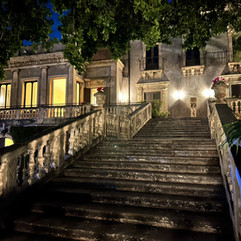
























































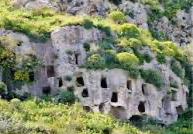
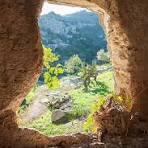







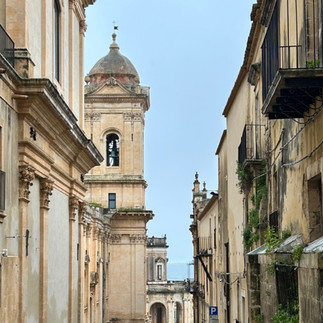



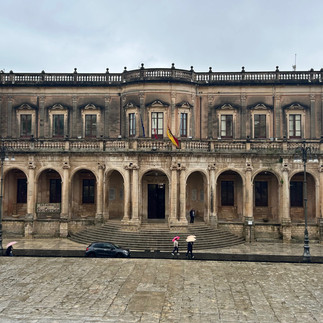
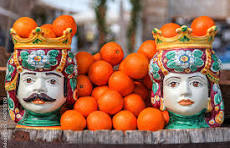


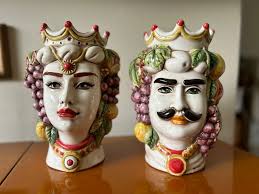



























































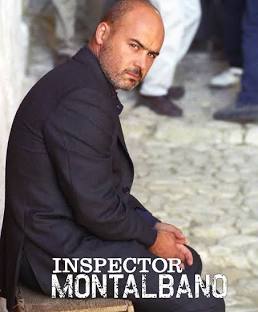

Comments